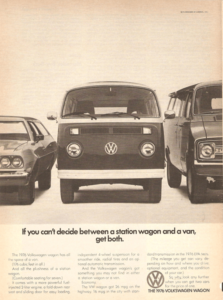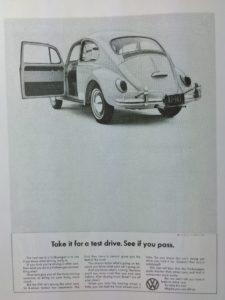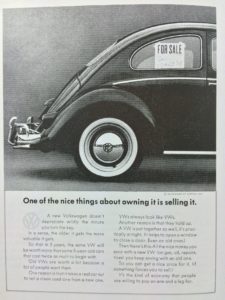This article is an excerpt from my Udemy course, 30 Copywriting Secrets from the Best Ad Campaign of All Time.
Imagine for a minute that you are a guy, and that you’re shy around women. You don’t know how to talk to women your age. Do you need to learn some really great pick-up lines?
Are you my Appendix? Because I have a funny feeling in my stomach that makes me feel like I should take you out.
Is there an airport nearby or is that just my heart taking off?
Do you work at Starbucks? Because I like you a latte.
If you’re shy, you don’t need to memorize some cheezy pick-up lines. You need to learn how to carry on a conversation. Starting a conversation is easy. Knowing what to say after you’ve delivered your pick-up line is much harder. As a copywriter, you face this same challenge with the first line of your body copy. Grabbing someone’s attention with a great headline is one thing. Having a conversation with that person in your body copy is a lot harder.
The first thing you must understand about the opening line in your body copy is that it must deliver on the premise of your headline without repeating it. A good headline doesn’t sell. It teases. A good headline makes a claim, or raises a question, or poses a riddle that the body copy must satisfy. Let me show you what I mean.
Look at this Volkswagen ad from the 1970s. This ad is part of a campaign that was voted the best ad campaign of all time. The photo shows a station wagon on the left, a van on the right, and the Volkswagen station wagon in the middle. Check out the headline: “If you can’t decide between a station wagon and a van, get both.”
That headline states a simple premise: If you buy the Volkswagen station wagon, you get a station wagon and a van in one vehicle. That visual and that headline grab your attention. You’re likely asking yourself, how is that possible, to get two vehicles for the price of one?
So you read the opening line. Now remember, the opening line must deliver on the premise of the headline without repeating. The opening line of the body copy says: “The 1976 Volkswagen station wagon has all the space of a van (176 cubic feet in all) and all the plushness of a station wagon. (Comfortable seating for seven).”
That’s how it’s done.
Here’s another example. The image is typical of so many Volkswagen ads of this era—plain and unexciting. But the car door is open, invitingly. Check out the headline: Take it for a test drive. See if you pass. Now there’s a twist. That headline sets up a premise. When you take a Volkswagen for a test drive, you are the one being tested.
Naturally, with a provocative headline like that, you expect the opening line of the body copy to deliver on that premise. Here is what the first line says: “The real test in a Volkswagen is to see if you know what driving really is. If you think you’re driving in other cars, then what you do in a Volkswagen is something else.” There, see what the copywriter did? The opening line answers the question that the headline prompted. When you test drive the Volkswagen, the test is to see if you know what driving is all about.
Here is my final example.
The picture shows a Volkswagen for sale by the owner. The headline says, “One of the nice things about owning it is selling it.” That headline establishes a clear premise. Selling your Volkswagen is a pleasant experience. In what way, you ask? Well, you read the opening line to find out. “A new Volkswagen doesn’t depreciate wildly the minute you turn the key. In a sense, the older it gets, the more valuable it gets.” Nice job. The copywriter delivers on the premise of the headline without repeating what the headline said.
Remember what is at stake here. Your headline has just grabbed your reader’s attention. Now your opening line is continuing the conversation. It’s your headline that grabs attention. But it’s your opening line that keeps it. So make sure you agonize over your opening lines as much as you agonize over your headlines. There’s nothing worse than approaching an attractive stranger, delivering a great pick-up line, and then not knowing what to say next. The result you get is disappointing. Don’t ask me how I know.
This article is an excerpt from my Udemy course, 30 Copywriting Secrets from the Best Ad Campaign of All Time.



Recent Comments